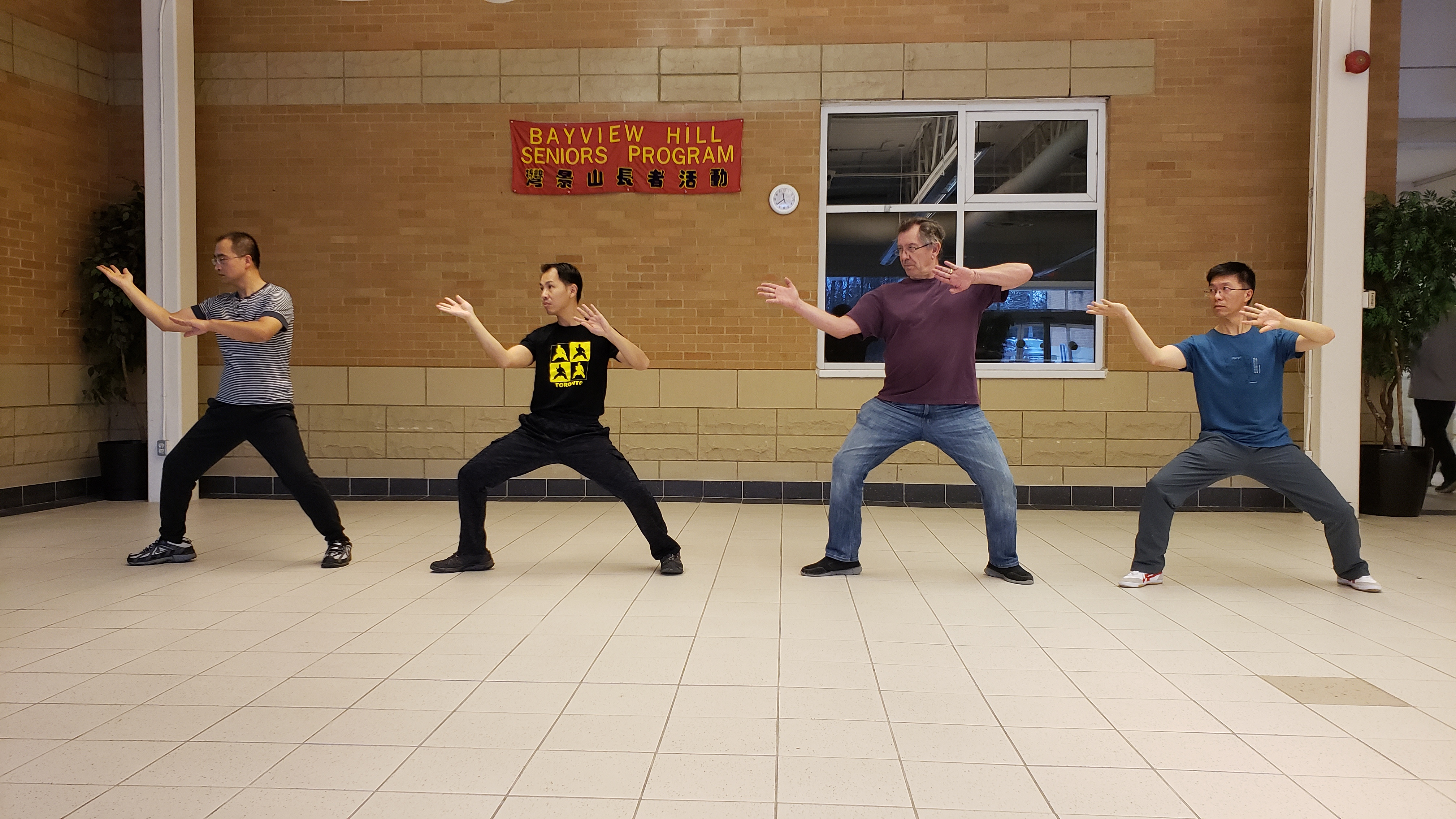 During practice on Dec. 23, 2018, we were practicing how to move in after making contact with the opponent. The particular exercise involved the two right forearms touching at one point. One person attempted his best to prevent the opponent from coming in, including moving his arm around. Everyone did this exercise against the others one by one. One student observed that when I showed how to move in, the opponent always appeared to have stopped his arm movement as soon as I started to move in. Others would struggle to fight at the upper body or the arm with the opponent. I found that being an interesting observation. Another student commented that he didn’t react or do any subsequent action when I moved in because there was no feedback/trigger to tell him to do anything, and he would just “watch” me coming in. I further demonstrated what they tended to do, which was to push his hand/arm forwarded as they moved the body forward, in which case, the opponent would respond immediately and stop me from coming in possibly using different methods. There should be no push at any time. What we need to do:
During practice on Dec. 23, 2018, we were practicing how to move in after making contact with the opponent. The particular exercise involved the two right forearms touching at one point. One person attempted his best to prevent the opponent from coming in, including moving his arm around. Everyone did this exercise against the others one by one. One student observed that when I showed how to move in, the opponent always appeared to have stopped his arm movement as soon as I started to move in. Others would struggle to fight at the upper body or the arm with the opponent. I found that being an interesting observation. Another student commented that he didn’t react or do any subsequent action when I moved in because there was no feedback/trigger to tell him to do anything, and he would just “watch” me coming in. I further demonstrated what they tended to do, which was to push his hand/arm forwarded as they moved the body forward, in which case, the opponent would respond immediately and stop me from coming in possibly using different methods. There should be no push at any time. What we need to do:
- Match the opponent at the contact point
If the opponent pushes his hand forward towards me, match his amount of power, direction, timing, such that this contact point does not move in space. While having that fixed, stretch my body, especially, the lower body forward to get close to the opponent. Since the contact point is at the forearm in this exercise, this means my elbow, shoulder, and torso are all behind the contact point initially. I must stretch them backwards continuously such that I can eventually wrap myself around the forearm contact point. A common approach at the beginning when we train this, is to simply let go of the contact point, and move in very quickly (This at least allows us not to push the opponent as we move in). However, when the opponent eventually picks up on the timing for the change in energy level, and he will be able to quickly adjust and block the in-coming. Another common mistake is that we break the stretch at the shoulder by closing the shoulder or folding at the shoulder, near the contact forearm as we try to move the body forward. This creates an indentation at that shoulder. - Match the opponent at a point away from the contact point
If the opponent pushes his hand forward towards me, allow it to happen, while I stretch my bottom in the opposite direction. I used my bottom to match his upper body action. This is using the opponent’s action to hide my own action. Since the opponent is given the illusion his action is successful, he will not change course or withdraw from this action. In order for this matching to work, I must establish a fixed point somewhere, e.g. my front shoulder axis. - Combination of 1) and 2)
In reality, I often start with 1), and make a switch of the fixed point from the forearm to the front shoulder axis after the front shoulder axis is stretched passed the initial forearm contact point, and perform 2).
What prompted this exercise was during yilu correction on “Wild horse parts its mane” the day before. Going from the left “Wild horse parts its mane” to right “Wild horse parts its mane”, we needed to make sure that the right hand did not move forward as the rest of the body moved forward. We needed to essentially pull the body forward by anchoring the right hand. See the video below for how we trained the move with the wall. The right hand was only allowed to move after the feet and torso had established the new position, but not during the transition.
Regarding the observation, it is the very thing that makes some application videos look fake. People often make comments about person A intentionally not move or just stand still, and “let” person B do the action, and the person making the comment would most definitely not behave like person A, and person B’s action sure would sure fail. What is often not recognizd by untrained eyes is what person B actually did to cause person A to behave that way, and it wasn’t person B asking person A to cooperate.



{ 1 comment… read it below or add one }
What is the reason I can view some embedded videos and others not?